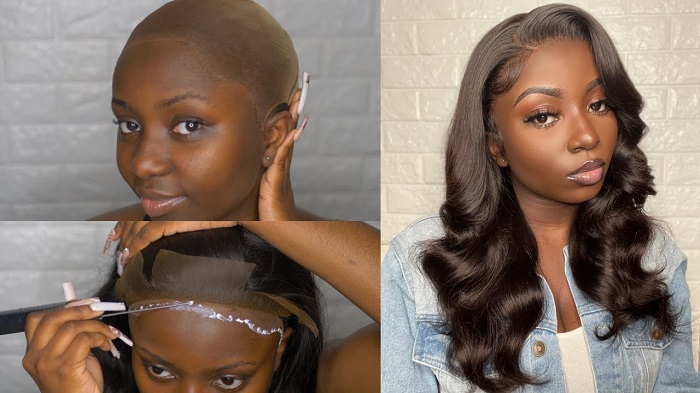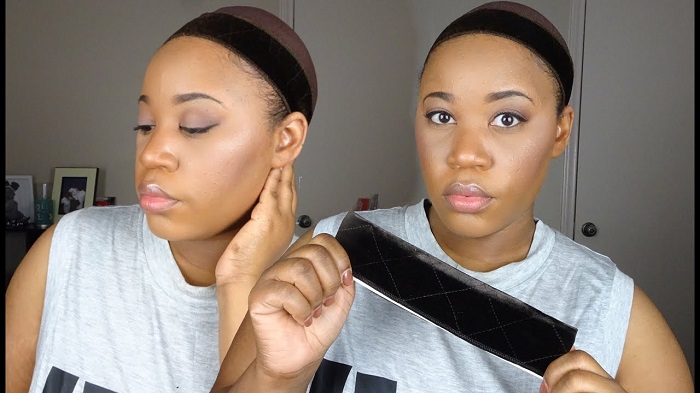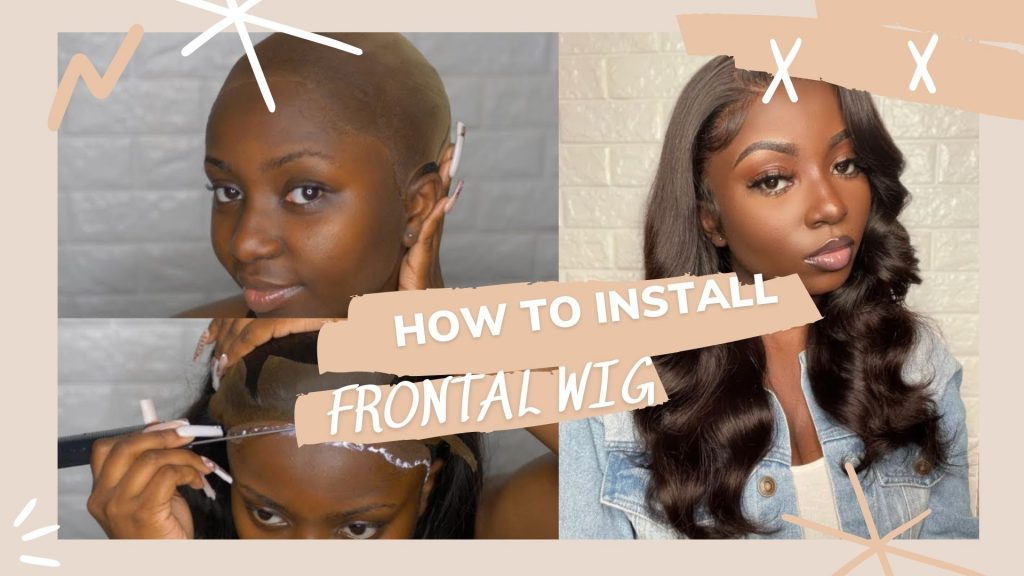Frontal wigs are a popular option for women who seek full coverage from ear to ear and a natural hairline. The most common way to install a lace frontal wig is using glue, but there are still different methods. Using wig combs, elastic bands, and wig grips are all available options for putting on a frontal wig without adhesive. In this post, we are giving more detailed guidance on how to install frontal wig with and without glue.
Prep your hair for frontal wig installation
Before you install your frontal wig, you will need to prep your hair first. This step aims at hiding your hair underneath the wig and making a flat foundation for your wig. There are several ways to hide your hair under a wig. You can choose a suitable one depending on the length, texture, and thickness of your hair, but the goal is for it to be as flat and smooth as possible.
Regardless of the method you choose, start by hydrating your hair and scalp and making sure your forehead is dry. Your lace front will lay better as a result of this.
Here are 4 common ways to get your hair ready for a wig:
- Braids: Simple braids are an excellent method for preparing hair for frontal wig installation. Braiding can be done on both short and long hair, but it is especially beneficial for short, and fine hair.
- Cornrows: Cornrows provide the flattest surface for a frontal wig installation, which is especially important if you’re going to get a seek look. It’s also a good option if you have thick, long hair that might stick out too much in a traditional braid.
- Twists: Twists take less time to prepare, but hair tends to come out faster.
- Pins: If you have really short hair, you can simply use some pins to pin your hair down your scalp.

How to install frontal wig?
There are two options for installing your wig: glue and non-glue methods. Using glue is the most common way to wear a lace wig. Yet, if you have some skin problems or don’t want to use glue frequently, there are still some other ways to secure your wig.
How to install frontal wig with glue?
- Begin with a dry, oil-free scalp.
- To avoid damage to your edges when the glue is applied, braid your hair into cornrows, then secure and flatten all of your hair into the wig cap.
- Check that the wig fits properly and is aligned with your natural hairline by trying it on your head
- Remove the wig and use a brush to apply the first layer of glue in small sections along the hairline, then blow-dry it. Apply the second layer of glue and let it dry until it is sticky and clear. When the glue is still white, don’t put your wig on.
- After that, use a freeze spray to keep your wig in place.
- Pull the wig back on gently after it’s dry. Adjust the wig’s edge so that the hairlines are even. Adjust the wig’s back so that it hangs naturally over your head.
- Because pressing the lace into the adhesive makes it harder to remove it, make sure the wig is completely matched with your hairline and that both ears are aligned.
- Then, using a pair of scissors, trim off the excess lace.
- Apply concealer to the knots with your foundation brush and blend them in with your skin tone for a more natural look.
- To make the baby hairs, pull out some strands of hair and cut them into small bits using a razor. Lay your baby hairs in place with the hair mousse. After that, tie a scarf around the edges and sit for a few minutes.
- Comb and style your hair in whatever way you like.
- When removing your lace front wig from your scalp, soften the glue with an adhesive remover before removing the wig.

How to install frontal wig without glue?
Use wig cap
- To eliminate extra oils, first, cleanse your skin with a gentle cleanser, then dab some alcohol on a cotton bud and wipe around your hairline.
- To flatten your hair and hold the wig in place, braid your hair into cornrows and put on the wig cap. Make sure that all of your hair, from the front to the nape of your neck, is tucked into the wig cap.
- Place your wig on your head and line it with your natural hairline to make sure it fits properly. You’ll need to adjust the elastic band if it’s too loose around your head. If it’s too tight on your head, simply remove it.
- You can also make use of the wig combs inside your wig to secure your wig in place.

Use wig grips
- Wig grips are a flexible cloth (typically velvet) that wraps around your head and secures your wig, which is especially useful if you’re on the go. It’s preferable to pick a band that matches your skin tone so you can’t see it below your wig, especially if you’re wearing a wig without bangs. So, below is how you should install a frontal wig with a wig grip:
- Wrap the wig grip around your hairline and tuck it behind your ears. The Velcro strap allows you to adjust the size and fasten it on your head.
- Start at the front of your head and place the frontal wig on top of the wig grip. Make sure the wig’s edge and the grip’s edge are aligned.
- Pull your hair into the correct position and tweak it as needed so that your wig rests comfortably on your head.

Above are our instructions on how to install frontal wig. With the right installation, you can confidently shine your beauty with the wig. Thanks for reading!

